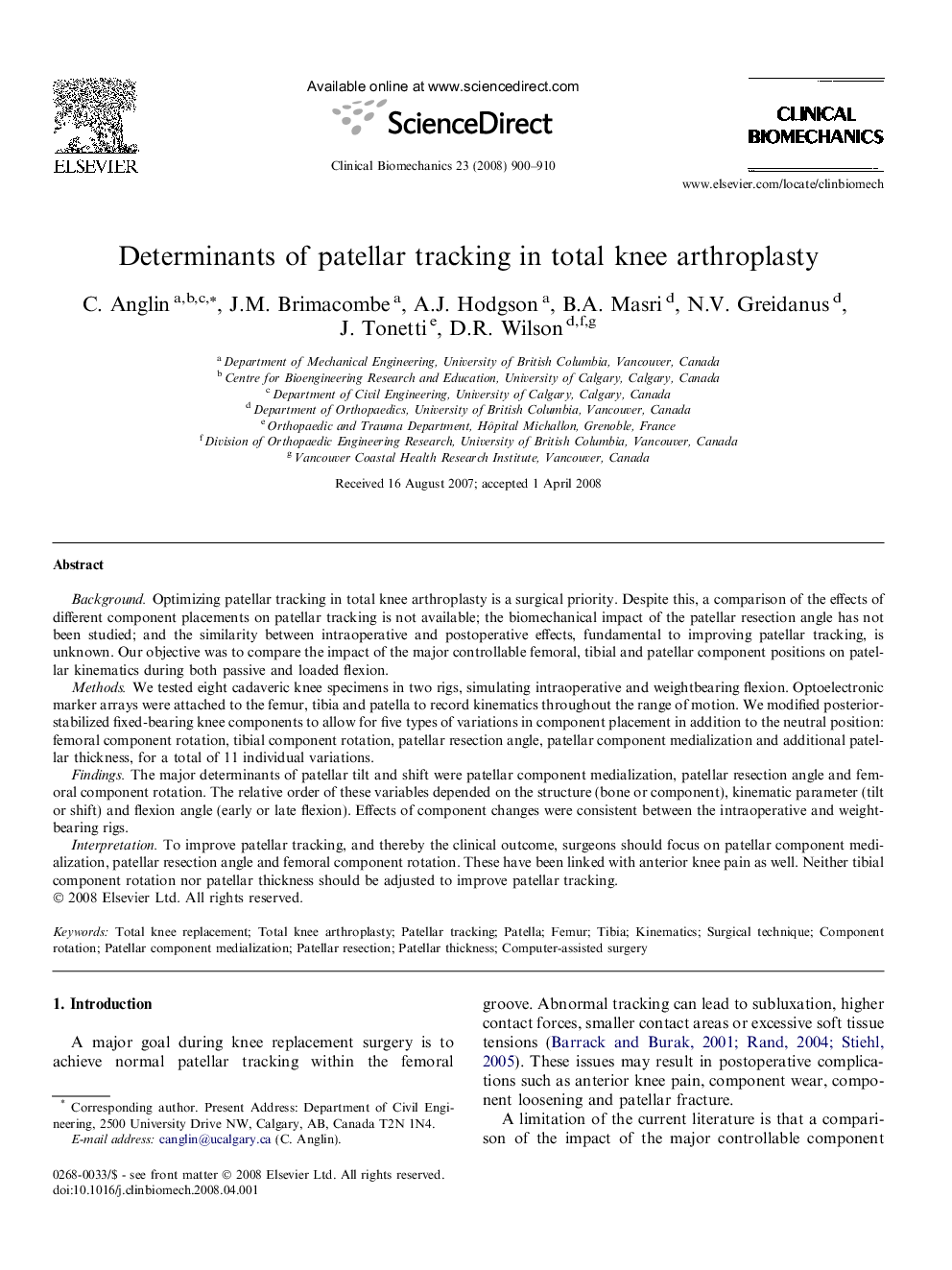| کد مقاله | کد نشریه | سال انتشار | مقاله انگلیسی | نسخه تمام متن |
|---|---|---|---|---|
| 4051387 | 1264990 | 2008 | 11 صفحه PDF | دانلود رایگان |

BackgroundOptimizing patellar tracking in total knee arthroplasty is a surgical priority. Despite this, a comparison of the effects of different component placements on patellar tracking is not available; the biomechanical impact of the patellar resection angle has not been studied; and the similarity between intraoperative and postoperative effects, fundamental to improving patellar tracking, is unknown. Our objective was to compare the impact of the major controllable femoral, tibial and patellar component positions on patellar kinematics during both passive and loaded flexion.MethodsWe tested eight cadaveric knee specimens in two rigs, simulating intraoperative and weightbearing flexion. Optoelectronic marker arrays were attached to the femur, tibia and patella to record kinematics throughout the range of motion. We modified posterior-stabilized fixed-bearing knee components to allow for five types of variations in component placement in addition to the neutral position: femoral component rotation, tibial component rotation, patellar resection angle, patellar component medialization and additional patellar thickness, for a total of 11 individual variations.FindingsThe major determinants of patellar tilt and shift were patellar component medialization, patellar resection angle and femoral component rotation. The relative order of these variables depended on the structure (bone or component), kinematic parameter (tilt or shift) and flexion angle (early or late flexion). Effects of component changes were consistent between the intraoperative and weightbearing rigs.InterpretationTo improve patellar tracking, and thereby the clinical outcome, surgeons should focus on patellar component medialization, patellar resection angle and femoral component rotation. These have been linked with anterior knee pain as well. Neither tibial component rotation nor patellar thickness should be adjusted to improve patellar tracking.
Journal: Clinical Biomechanics - Volume 23, Issue 7, August 2008, Pages 900–910